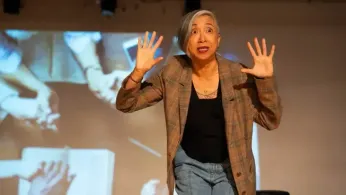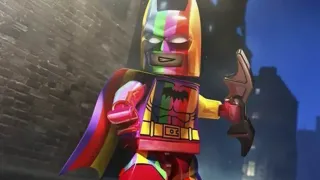
2 hours ago
Anak ni Tapia Illuminates Queer Narratives: Breaking Boundaries Through Performance Art
READ TIME: 3 MIN.
This month, the queer arts landscape is animated by the presence of Lani Montreal, a Chicago-based playwright and performer whose multidisciplinary show “Anak ni Tapia: Leaving Mother” is making waves from New York to Los Angeles and Chicago. Presented both in-person and via simulcast, the work is part of a movement to foreground intersectional queer voices and foster community across geographic and cultural borders .
“Leaving Mother” is more than a theatrical piece—it’s a ritual of storytelling, weaving together themes of migration, family, chosen kin, and queer resilience. Tapia, who identifies as queer and who was born and raised in the Phillpines, draws from her experience as an immigrant and queer artist in telling her story as the child of a Filipina TV star. The show, described as “raw, poetic, and visually arresting,” uses spoken word, movement, and multimedia projection to trace journeys of leaving home and building new forms of belonging .
Audience members—many themselves LGBTQ+ immigrants and people of color—have responded with emotion and solidarity, sharing stories of their own migration, estrangement, and the rituals of forging queer family. In post-show discussions, Montreal emphasized the importance of “making space for our unwritten histories” and “giving queer diaspora a stage” .
The impact of Montreal's work cannot be separated from the wider resurgence of queer rituals and gatherings in August 2025. This year’s Queer Narratives Festival in Kansas City, for example, brings together visual and performing artists in a celebration of LGBTQ+ storytelling and collective healing . The festival, with its workshops and community events, echoes Montreal’s emphasis on art as a tool for building inclusive futures.
Similarly, events like Werk In Progress—a long-running open mic night for queer artists—are providing ongoing platforms where experimentation, vulnerability, and affirmation are core values . These spaces are not only showcases for talent but also rituals of recognition, where language, fashion, and performance become modes of queer world-making.
Contemporary queer art is inseparable from the slang, fashion, and subcultures that inform it. Montreal’s performances, for instance, often incorporate Filipino queer slang and references to ballroom culture, blending diasporic and local traditions. This hybrid aesthetic is mirrored in the broader queer nightlife this summer, where artists like Tyler, The Creator, Doechii, and Remi Wolf headline major festivals such as Lollapalooza, bringing unapologetic queer style to mainstream audiences .
Fashion at these events is a statement of resistance and celebration—think neon, DIY accessories, and the reclamation of cultural motifs that challenge binary norms. Attendees and performers alike are redefining queer visibility, not only through what they wear but through how they move and interact, turning each event into a living archive of queer creativity.
What sets "Anak ni Tapia" apart, and what characterizes much of queer art this month, is a commitment to centering marginalized perspectives. The intersection of race, gender, and migration is not an afterthought but a driving force in both content and practice. Organizations and festivals are increasingly prioritizing BIPOC, immigrant, and transgender artists, recognizing that true visibility comes from lifting up those whose stories have historically been erased or sidelined .
This shift is reflected in programming, funding, and outreach, with audiences responding to more nuanced and authentic representations of queer life. The rituals of gathering—whether at a festival, an open mic, or a performance like “Anak ni Tapia”—are themselves acts of cultural resistance and renewal.
As August draws to a close, the energy around queer art and performance remains high. The continued presence of artists like Lani Montreal signals a broader movement toward self-definition, community care, and creative experimentation. In a time when anti-LGBTQ+ legislation and backlash persist in various regions, these acts of gathering and storytelling are more than entertainment—they are lifelines and declarations of presence.
Through art, music, fashion, and ritual, queer communities are forging new pathways, honoring intersectional histories, and reminding the world that their stories, in all their complexity, deserve to be seen and celebrated.






